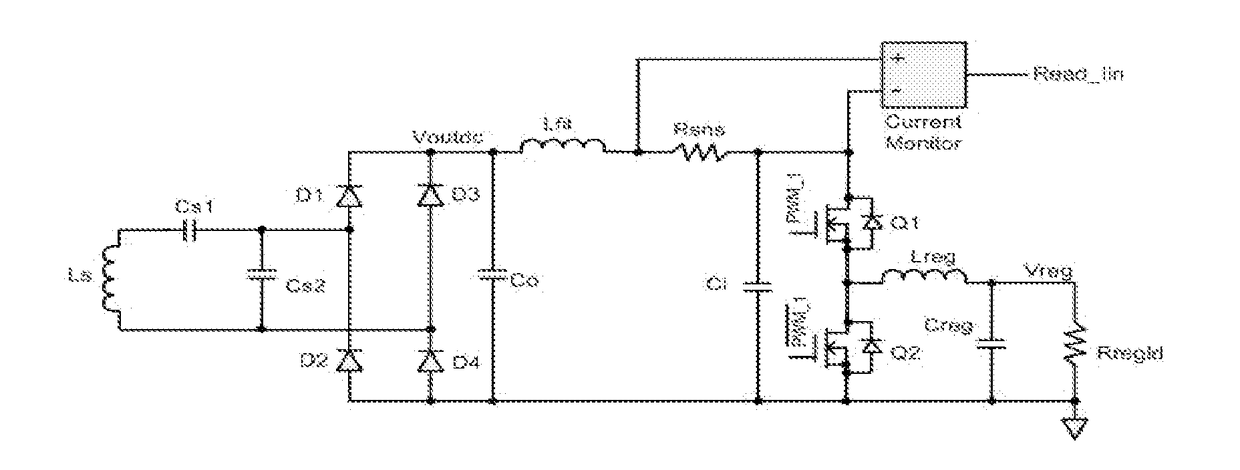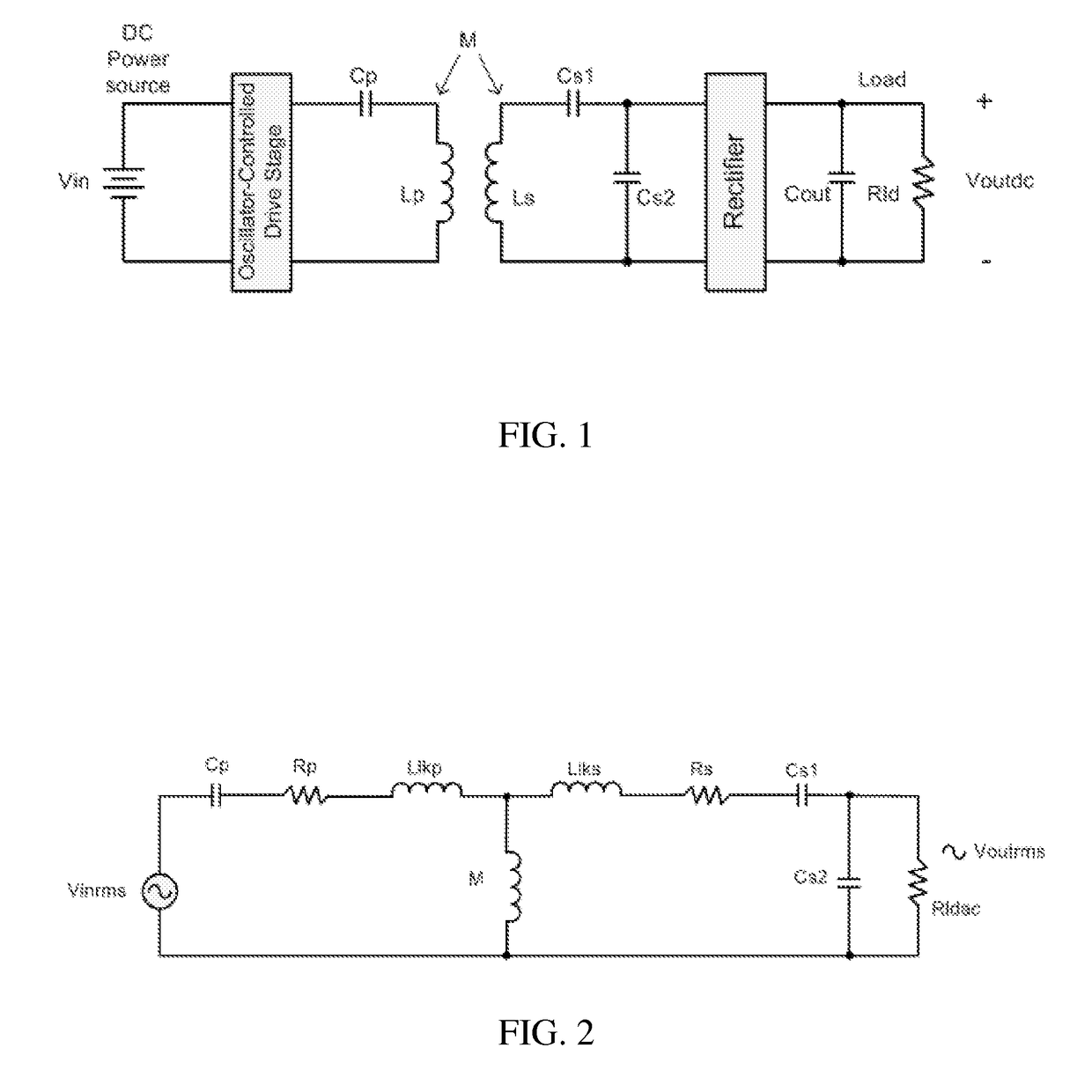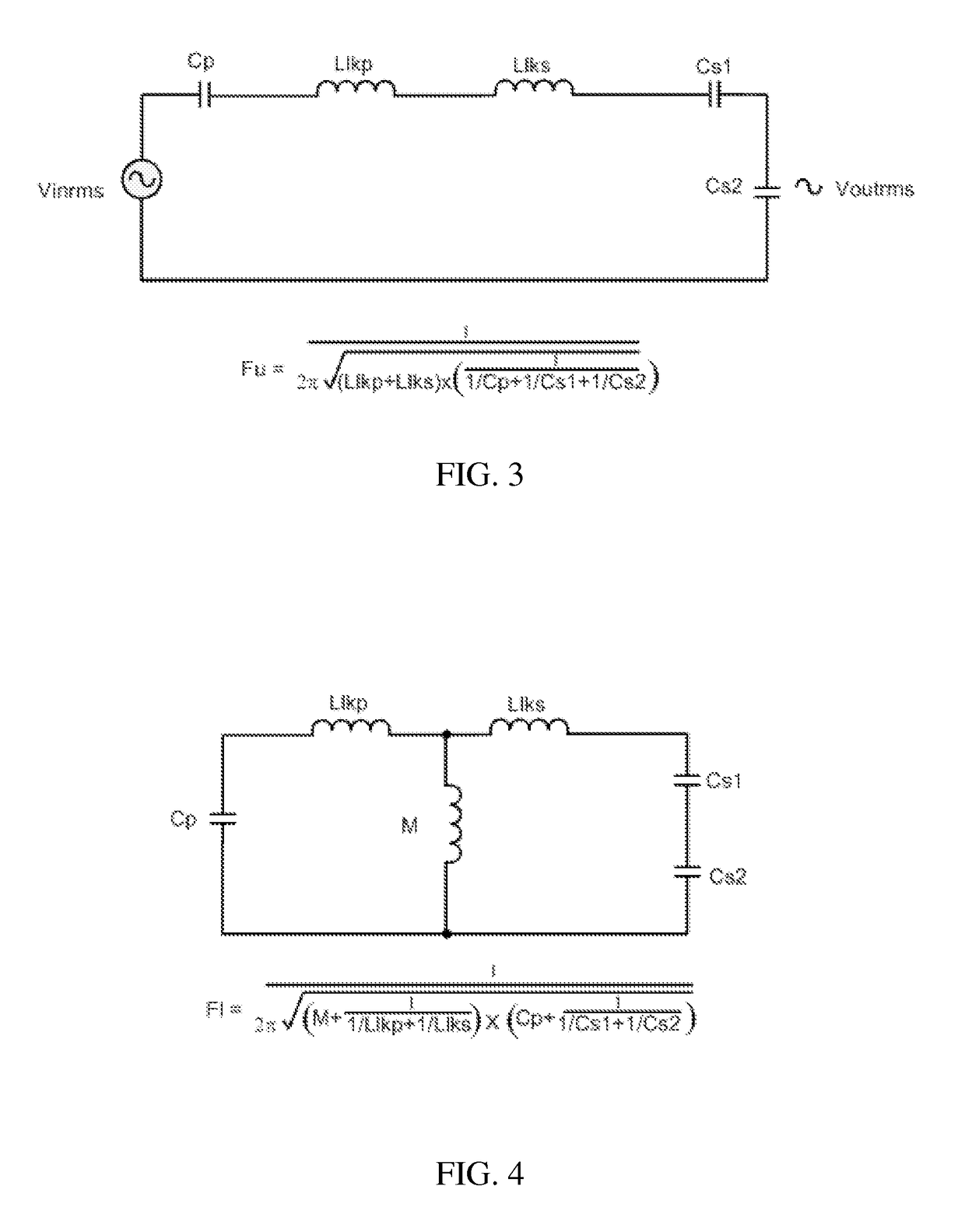Variable-distance wireless-power-transfer system with fixed tuning and power limiting
a wireless power transfer and variable-distance technology, applied in transmission, transportation and packaging, electric vehicles, etc., can solve the problems of low efficiency, large voltage increase, and limited resonant gain
- Summary
- Abstract
- Description
- Claims
- Application Information
AI Technical Summary
Benefits of technology
Problems solved by technology
Method used
Image
Examples
Embodiment Construction
[0038]FIG. 1 is a simplified circuit diagram of a typical wireless-power-transfer system that is included in preferred embodiments of the present invention. A DC power source is connected to an oscillator-controlled drive stage. The drive stage excites the primary resonant tank circuit, which includes a primary resonant capacitor Cp and a primary transmitting coil Lp. A secondary receiving coil Ls is connected to a rectifier circuit via a secondary series-resonant capacitor Cs1 and a secondary parallel-resonant capacitor Cs2. The rectifier circuit is connected in parallel to the parallel-resonant capacitor Cs2, which results in a DC output voltage across an output capacitor Cout that provides DC power to a load Rld.
[0039]The primary transmitting coil Lp and the secondary receiving coil Ls are coupled with a mutual inductance M, which is related to the coupling coefficient K by the equation M=K*√{square root over ((Lp*Ls))}. If the primary and secondary coils Lp and Ls have the same ...
PUM
 Login to View More
Login to View More Abstract
Description
Claims
Application Information
 Login to View More
Login to View More - R&D
- Intellectual Property
- Life Sciences
- Materials
- Tech Scout
- Unparalleled Data Quality
- Higher Quality Content
- 60% Fewer Hallucinations
Browse by: Latest US Patents, China's latest patents, Technical Efficacy Thesaurus, Application Domain, Technology Topic, Popular Technical Reports.
© 2025 PatSnap. All rights reserved.Legal|Privacy policy|Modern Slavery Act Transparency Statement|Sitemap|About US| Contact US: help@patsnap.com



